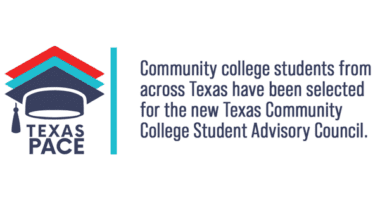Developing a Representative and Inclusive Vision for Education
At the DRIVE Summit in North Carolina, John B. King Jr. spoke with stakeholders about the importance of recruiting, preparing, supporting, and retaining educators of color.
Introduction
Thank you, Governor Hunt, for the introduction, and for the important groundwork you’ve laid in the state of North Carolina on the critical efforts we’re here to discuss today. It’s exciting to see Governor Cooper build upon that foundation.
Personally, I’m heartened by the work that’s being done in North Carolina and across the country to move the needle not only on recruiting teachers of color, but also on making sure that once teachers of color go into classrooms, schools can successfully keep them there.
I cannot overstate the importance of representation. And certainly, all students, not just students of color, benefit from being taught by educators of color. I’d take that even further and say everyone in a school benefits from diversity.
As a former teacher, I know firsthand that the presence and absence of Black teachers can affect the outcomes of our children—but particularly our Black children—in many ways.
I have two daughters who attend Maryland public schools in Montgomery County—one in middle school and one in high school. My wife and I were deliberate in our choice that our daughters would attend Montgomery County public schools because the district has been intentional, over many years, to make the diversity of its schools a priority.
As an Afro-Latino father, it is especially important to me that my girls learn with diverse peers as well as from teachers and school leaders who look like them.
This isn’t just a “nice-to-do.” Research shows that educators of color have a direct impact on our children, an impact that also influences academic outcomes.
A recent Johns Hopkins study, for example, shows that having a Black teacher for just one year in elementary school reduced the chances that Black students would drop out of school by 29%. And for Black boys from very low-income backgrounds, the results are even greater; their chance of dropping out fell by nearly 40%.
Imagine, having just one Black teacher has this effect.
But the unfortunate reality is that although more teachers of color are entering our classrooms, the chances are slim that, throughout their K-12 schooling, my daughters, and all of our children, will have educators of color robustly represented in their classrooms.
North Carolina Teacher Diversity: The Challenges and Opportunities
Here, in North Carolina, we know that educators of color are not well represented in the state’s public schools. While 26% of North Carolina students are Black, only 15% of teachers are Black.
About 17% of North Carolina students are Latino, but only 2% of teachers are.
This is, frankly, unacceptable. There are too few teachers of color in schools all across North Carolina, from urban, to rural, to suburban parts of the state.
North Carolina’s largest school district, Wake County Schools, has nine White students for every White teacher, whereas there are 25 Black students for every Black teacher.
In Asheville City Schools, the disparities are even wider.
In Asheville, there are also nine White students for every White teacher, but there are 56 Black students for every Black teacher.
The situation isn’t much better when we look at the representation of Latino teachers. In the largest district, Wake County, there are a whopping 100 Latino students for every Latino teacher. In New Hanover County Schools, there are 117 Latino students for every Latino teacher. And in the Charlotte-Mecklenburg schools, the second largest school district in the state, there are 169 Latino students for every Latino teacher.
This lack of representation can have powerful effects on our children’s academic success as well as on their positive experience of school.
For example, studies show that Black students are more likely to be referred to gifted programs when they are taught by a Black teacher.
Across the country, we know that Black and Latino students are under-enrolled in advanced courses. A study from my organization, The Education Trust, revealed that more than half a million students from low-income families and students of color are missing from Advanced Placement and International Baccalaureate courses.
We found that gaps exist not just between schools, but also within schools, where there are barriers that prevent students of color and students from low-income backgrounds from enrolling in and succeeding in advanced courses.
Studies also have shown that teachers of color tend to hold higher expectations of students of color.
In addition to these academic outcomes, educators of color influence the experience of school and the school climate for students of color. In fact, students of color are more likely to be in school when they are taught by teachers who look like them.
We know this because teachers of color are less likely to use exclusionary school discipline practices—such as suspensions and expulsions—with students of color.
In North Carolina, Black students are already more than four times as likely to be suspended than White students.
Progress in North Carolina and an Opportunity for the State to Lead on Data
It’s encouraging that North Carolina is making strides on policies and programs that can boost the recruitment and retention of educators of color.
Governor Roy Cooper’s budget for 2019-2021 includes better pay for teachers and principals and additional investments in educators’ professional development—all of which can help to retain teachers of color.
As it stands, the North Carolina budget is investing $5 million in programs designed to recruit, retain, and promote North Carolina’s educator workforce.
It is especially encouraging that this allocation includes restoring state funds to pay for National Board certification for teachers, for expanding services to recruit teachers of color, and for enhancing new teacher support programs.
There is certainly room for growth when it comes to targeting resources to improve the diversity of the teaching workforce.
North Carolina’s $1.8 million pilot program to increase recruitment, retention, and support for educators of color in particular is a promising start, and the governor deserves a round of applause for this.
Vital to all of this work are clear, numeric goals for increasing teacher diversity.
This is an area where North Carolina has an opportunity to lead.
Currently, there is no school-level data for educators of color. One great place to start would be including school level data in the state’s “statistical profile” that includes district-level teacher demographic data.
Another area where the state can lead? Data on teacher candidates. The state’s report cards for teacher preparation programs also do not include a headcount, by race, of teacher candidates formally admitted to and enrolled in programs leading to licensure, even though the state makes that information public in a separate set of program reports.
Teacher prep programs can be excellent pipelines for increasing teacher diversity.
North Carolina is home to a number of Historically Black Colleges and Universities—and we know that HBCUs, nationally, prepare a large share of teachers of color.
An expansion of the North Carolina Teaching Fellows Program to HBCUs in the state would bolster the ability of North Carolina’s HBCUs to train teachers of color.
When I was in New York, we created a summer fellows program where we heavily recruited from HBCUs and MSIs. The idea was to get students to do the program during the summer of their junior year.
If they did well, they taught summer school and were sent back to their colleges with job offers. That created a strong pipeline of teachers of color.
We’re seeing more and more states introduce policies aimed at increasing educator diversity and, often, the best place to look is in our own backyard.
For example, here in North Carolina, there is the Develop Homegrown Teachers Pilot, a bill introduced to develop North Carolina teachers who will teach in underserved areas across the state.
Further south, in Alabama, Senator Doug Jones recently proposed the Classrooms Reflecting Communities Act, a bill to address shortages in teacher quality and diversity in rural, high-needs schools.
The bill authorizes five-year grants to eligible partnerships to establish a grow-your-own program, which recruits diverse teacher candidates from the community into the teaching profession and supports them as they work to receive a teacher certification or licensure.
These are the kinds of state-enacted solutions we need replicated in every state to show a serious commitment to this issue.
The Education Trust just released this week, as a matter of fact, a series of recommendations about five things that state leaders can do to advance equity across a number of issue areas, including access to strong and diverse educators. I encourage everyone here to check out the recommendations that I’ve been discussing with you today, on our website at edtrust.org.
In all of this work, it is important to remember that recruitment is only the beginning.
It is shortsighted to recruit without a strategy to retain. Retention is key.
A Circle of Excellence: Roxbury Experience
When I think of retention, I think of a circle of excellence that we reinforce for our teachers and for our children. I’ll tell you why.
When I was a school principal in Roxbury, Massachusetts, it was a priority of mine to hire diverse teachers, and to ensure that they were well supported to remain in the classroom.
I will always remember Catalina Sainz. Catalina broke barriers as the only Latina woman in the math department at Wellesley College.
After college, she taught at my school where she had a Cape Verdean student, Titciana Barros, who thrived in her class.
Titciana went on to excel studying in Boston College. What happened next? Titciana returned to Roxbury Prep—her alma mater—to teach sixth grade math. Today, Titciana is the principal of the school.
That’s the circle of excellence … a star Latina educator who inspired a talented Latina student who then went on to become an outstanding educator herself. This circle of excellence matters. Tremendously.
When we have representation in education it means so much more than just academic achievement. It has a lifelong, multiplying effect, influencing educators, students, schools, and whole communities.
If You Listen, We Will Stay
Representation in education is an issue that is near and dear to me, and one that I champion in whatever space I occupy. So it was important to me to support that work at The Education Trust with our phenomenal team.
To retain more educators of color and maintain more circles of excellence, we have to understand what contributes to teachers of color leaving our classrooms.
Earlier this year, my organization, The Education Trust, co-produced a report entitled, If You Listen, We Will Stay, which explored why educators of color leave the classroom. Some of the top reasons that emerged were because educators felt that they experienced an antagonistic school culture, and they perceived that they were undervalued and deprived of agency and autonomy.
Too often, educators of color feel marginalized and silenced in our public schools. That doesn’t create an environment where teachers of color can do their best work with students. And it doesn’t create the conditions where these teachers—despite loving what they do—will choose to stay in the profession.
Through other studies we’ve conducted, we surveyed Black and Latino educators and found that educators of color often feel that they have to “tone down” their personalities in the schools where they work and that their voices are not heard by school leaders or their White colleagues.
We heard from teacher after teacher about an “invisible tax” that they paid as educators of color: African-American male teachers expected to be the disciplinarian in their schools, Latina teachers expected to translate for families, teachers of color asked to bear the weight of what should be an institutional responsibility for creating diverse, equitable, and inclusive school communities.
I’ve had this experience and I’m sure many of you have as well: “So, John, what are we doing for Black History Month?”
As an educator of color, people assume that you should be responsible for doing the work on diversity, equity and inclusion.
This work isn’t just for educators of color to own. The institution has to own it, also. It’s all of our work to own.
Everyone in this room must ask: “What more can I do to support educators of color?”
Teachers in the room: Consider the ways that you can support each other so that each of you is respected and valued, and so that everyone’s voice is heard.
I will also say this: With wealth inequality reaching its highest levels in 50 years, administrators must recognize teachers’ value. Administrators must ensure that salary increases, which are particularly important to teachers of color, who are disproportionately impacted by low salaries and high debt, are compensation for that “invisible tax” exacted on educators of color.
Although pay is important, it isn’t the sole solution to retaining teachers. We need both monetary and non-monetary incentives.
Our report showed that this could be built out in a few ways. For example, by creating culturally affirming school environments; affirming teachers’ humanity and racial identity in school; empowering and investing in teachers; doing work on positive school culture by creating a school-wide “family;” and adopting a district priority related to retaining teachers of color.
This is a framework that we can be considering in North Carolina and all across the country.
Closing
As I close today, I will say that all of you have the power to influence change. Coming together in well-organized convenings such as this one is a start. While you’re here, make connections. Share best practices. Take the information you learn today back to your schools and your districts to increase educator diversity.
Students in schools all across the country need equity-oriented leaders who believe that all children can succeed, who set high expectations for students and adults alike, and who are committed to identifying and improving the systems that perpetuate inequities both between and within schools.
Leaders such as National Teacher of the Year Rodney Robinson, who I am honored to introduce and talk with in just a few moments.
It’s teachers like Rodney who are making a difference in students’ lives, the kind of difference that lasts for generations. Nearly five years ago, Rodney began teaching at Virgie Binford Education Center, a school inside the Richmond Juvenile Detention Center, in an effort to better understand the school-to-prison pipeline.
His approach to teaching is collaborative and civic-centered as he promotes social-emotional growth in his students. With almost two decades in teaching and a wealth of accolades to back up his work, Rodney uses relationship-building to develop alternative programs to prevent students from entering the school-to-prison pipeline.
Please help me in welcoming my good friend and an educator I deeply admire, the 2019 National Teacher of the Year and one of The Root’s 100 Most Influential African-Americans, Rodney Robinson.








